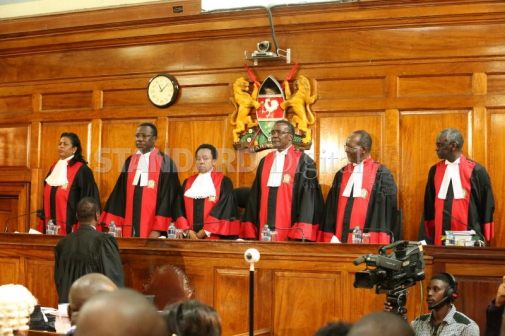×
The Standard e-Paper
Join Thousands of Readers

Seven Supreme Court judges will today decide whether to uphold President Uhuru Kenyatta’s re-election or order a fresh election within 60 days.
The landmark decision on the petition by NASA presidential candidate Raila Odinga will not only change the country’s political destiny, but will also be a precedence setter in determining election disputes filed over the August 8 General Election.